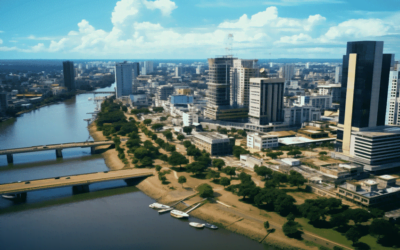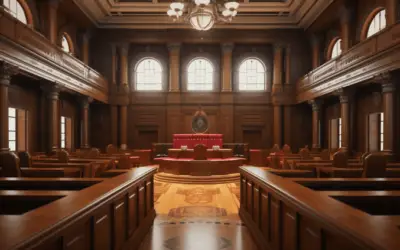Hey there, fellow drone enthusiasts! Have you ever found yourself curious about the drone laws in Peru? Well, you’re not alone, and I totally get it.
We live in a world where drones have become a gateway to stunning aerial adventures and breathtaking photography. But before you take off, it’s essential to know the ins and outs of Peru’s drone regulations.
So, let me be your guide on this journey through the skies of Peru. I’ve done the research, so you don’t have to. We’ll delve into the Peru Drone Laws, providing you with the answers you need to soar safely and legally.
You’re in the right place if you’re looking for expert insights, trustworthy information, and practical advice on how to navigate Peru’s drone regulations.
Let’s dive in, and by the end of this article, you’ll have all the knowledge you need to fulfill your search intent for “Peru Drone Laws.” Stick with me, and let’s take your drone adventures to new heights!
- General Regulations for All Drone Operators
- Different Categories of Drone Operators
- Hobbyist Drone Laws in Peru
- Commercial Drone Laws in Peru
- Drone Regulations for Visitors to Peru
- Government Drone Laws in Peru
- Peru Permission and Customs Considerations
- Key Regulations for Drone Operation in Peru
- Bringing Your Drone On Airplanes to Peru
- Final Thoughts on Peru Drone Laws
- Frequently Asked Questions on Peru Drone Laws
General Regulations for All Drone Operators

Now, let’s dive into the nitty-gritty of Peru’s drone regulations that apply to every drone operator, whether you’re a local resident, a curious tourist, or a government agency. These rules are the backbone of safe and responsible drone flying in this beautiful country.
Universal Guidelines for All Flyers
Picture this: You’ve got your drone ready for action in the stunning Peruvian landscape. But before you press those takeoff buttons, there are some crucial general regulations to keep in mind. These rules aren’t just for your safety but for everyone around you.
First and foremost, don’t let your drone venture beyond your line of sight. It’s like driving a car—you wouldn’t want to take your eyes off the road. Keep a close eye on your drone to ensure you can react to any unforeseen situations.
Here’s a practical tip: think of your drone’s battery life as your flight duration limit. In Peru, the rule is not to fly for more than an hour continuously. You wouldn’t want your drone to run out of juice while it’s exploring the skies, would you?
Another key regulation is to stay grounded when the sun goes down or when visibility becomes an issue due to bad weather. Just like driving at night or in a heavy downpour can be risky, the same applies to flying a drone. Let’s keep it safe and sound.
The Sky’s the Limit, but Not Really
Now, about that altitude. In Peru, the rule is clear: do not exceed 500 feet in altitude. It’s like having a height limit when you’re on a roller coaster. Staying within this range ensures safety for both your drone and any other aircraft that might be cruising by.
Maintaining distance is crucial when you’re soaring through the skies. At least 30 meters horizontally and 20 meters vertically should separate your drone from people, objects, or buildings. It’s a bit like keeping your distance from fellow hikers on a trail—respect their space, and they’ll do the same.
Oh, and one more thing, my fellow adventurers – avoid flying over people or large crowds. It’s like respecting a quiet library; silence is golden, and so is everyone’s safety.
Last but not least, in this section, remember that airports are no-fly zones within 4 kilometers (2.5 miles). Just think of it as an invisible boundary that ensures a smooth flow of air traffic.
So, these are the universal regulations that apply to all drone operators in Peru. But there’s more to discover, so keep reading if you’re eager to explore the specifics.
Also Read: Drone Regulation in Paraguay 2024
Different Categories of Drone Operators

When it comes to drone regulations in Peru, it’s not a one-size-fits-all scenario. There are different categories of operators, each with its own set of rules and requirements.
Whether you’re a hobbyist drone enthusiast, a commercial operator, a visitor exploring the wonders of Peru, or even part of a government agency, it’s essential to know where you stand.
The Categories Unveiled
Imagine it like this: you’re entering a theme park, and there are various sections, each with its own attractions and rules. Peru’s drone regulations work similarly, categorizing drone operators into four distinct groups.
First, we have the hobbyists, those who fly drones for personal enjoyment and exploration. Then there are the commercial operators who use drones for business purposes. Tourists and visitors form another category, eager to capture Peru’s beauty from the sky. Lastly, government agencies have their own set of regulations for drone use.
Each of these categories has its own specific requirements and permissions, ensuring that drone operations remain safe and beneficial for everyone involved. So, let’s explore what each category entails and what you need to know before taking a flight to Peru.
Also Read: Drone Regulation in Papua New Guinea 2024
Hobbyist Drone Laws in Peru

If you’re a resident of Peru and consider yourself a hobbyist drone pilot, there are some regulations tailored just for you. These rules are designed to ensure your recreational drone flights are not only enjoyable but also safe and responsible.
Rules for Hobbyist Residents
So, what’s the deal for residents who fly drones for fun? Well, first off, you’ll need to obtain a Peru drone pilot license. Think of it as getting your driver’s license before hitting the road. This license ensures you have the knowledge and skills to pilot a drone safely.
But it doesn’t stop there. You’ll also need to register your drone. It’s a bit like getting your vehicle registered with the authorities. This process helps the authorities keep track of drones in use and ensures accountability.
Exemption and Recommendation
One notable exemption for hobbyists in Peru is drone remote ID. Unlike some countries, Peru doesn’t require hobbyist drone operators to have remote ID technology on their drones.
It’s like not needing a fancy tracking device on your bicycle when you’re riding around your neighborhood.
However, it’s highly recommended that you consider drone insurance. Accidents happen, and having insurance can save you from unexpected expenses. Just like having car insurance for those unexpected fender benders, drone insurance can provide peace of mind while you explore the skies.
These regulations are in place not to hinder your drone adventures but to make sure they’re as enjoyable and safe as possible.
So, if you’re a hobbyist drone enthusiast in Peru, keep these rules in mind and take to the skies responsibly.
Also Read: Drone Regulation in Panama 2024
Commercial Drone Laws in Peru

Now, let’s turn our attention to the commercial side of drone operations in Peru. If you’re planning to use drones for business purposes, there are specific rules in place to keep things running smoothly and safely.
Rules for Commercial Operators
Commercial drone operators, this one’s for you. In Peru, you’ll need a commercial drone pilot license to take your business to the skies.
It’s a bit like needing a special license to operate a taxi or a delivery truck. This ensures that you have the expertise and knowledge required for commercial drone operations.
Additionally, you’ll have to register your drone, just like hobbyists. This registration process helps authorities keep track of commercial drones in operation, which is crucial for safety and accountability.
Exemption and No-Requirement Zone
Here’s the good news for commercial operators in Peru: You won’t have to worry about drone remote ID. Unlike some countries, Peru doesn’t require commercial drone operators to equip their drones with remote ID technology.
It’s a bit like not needing a beacon on your delivery truck to identify it—your license and registration are sufficient.
Furthermore, while insurance is not mandatory for commercial drone operations in Peru, it’s always a wise choice. Think of it as business insurance.
Accidents or unexpected situations can be costly, and having drone insurance can provide that much-needed peace of mind.
So, if you’re planning to take your drone endeavors to the commercial level in Peru, these regulations are here to help you navigate the skies responsibly and efficiently.
Also Read: Drone Regulation in Palestine 2024
Drone Regulations for Visitors to Peru

If you’re a traveler eager to explore the wonders of Peru from the sky, there are specific rules and regulations in place to ensure your drone adventures are not only breathtaking but also safe and compliant with local laws.
Rules for Foreign Visitors
For our foreign visitors or tourists, flying drones in Peru is a fantastic way to capture the mesmerizing beauty of this country. However, there are a few rules to keep in mind. Just like a local’s drone, you’ll need a drone pilot license and registration or authorization to take off.
It’s like obtaining a tourist visa; it ensures that you’re aware of the regulations and can fly your drone responsibly.
The Extra Layer of Safety
While insurance isn’t obligatory, it’s highly recommended for visitors as well. Think of it as travel insurance; it provides that extra layer of safety, ensuring that you’re financially protected in case of any mishaps.
But here’s a crucial tip: when you’re entering Peru, remember to declare your drones at customs. Not doing so can lead to some unwanted consequences, like a fine of $250 USD.
It’s similar to declaring valuable items you’re carrying with you, ensuring that you’re in the clear and ready to enjoy your drone adventures.
So, if you’re planning to visit Peru and want to experience its beauty from a different perspective, these rules are here to help you make the most of your drone flights while respecting the local regulations.
Also Read: Drone Regulation in Palau 2024
Government Drone Laws in Peru

For government entities in Peru, drone operations serve a variety of purposes, from surveillance to disaster response. To ensure smooth and safe operations, specific regulations have been put in place to guide these public sector endeavors.
Rules for Government Operators
Government drone operators, like any other drone pilots in Peru, are required to adhere to certain regulations. A government drone pilot license is necessary, akin to any other professional license in a public service role.
It ensures that those responsible for drone operations have the required skills and knowledge.
Similarly, government drones are subject to registration, just like the ones operated by residents or tourists.
This registration process helps maintain accountability and track drones in operation, whether they’re used for monitoring public events or emergency response.
No Remote ID or Insurance Required
Interestingly, Peru does not impose the requirement for drone remote ID on government drone operators. It’s a unique aspect of drone regulations in the country, emphasizing trust in public sector operations.
Furthermore, while insurance is recommended, it’s not mandatory for government drone operations. This is a notable point, indicating the confidence placed in government agencies to operate drones responsibly and efficiently while keeping the public’s interests in mind.
So, if you’re a government entity operating drones in Peru, these regulations are tailored to facilitate your efforts while ensuring compliance with safety and accountability standards.
Also Read: Drone Regulation in Pakistan 2024
Peru Permission and Customs Considerations

Now, before you embark on your drone adventure in Peru, there are some essential permission and customs considerations you should be aware of. These steps ensure a seamless and trouble-free experience, so let’s dive in.
The Art of Planning Ahead
First and foremost, it’s crucial to be prepared. When you’re planning to fly a drone in Peru, make sure to apply for approval well in advance. The approval process typically takes about seven days to complete, so it’s wise to plan accordingly. Think of it like booking your flight tickets; the earlier you do it, the better.
VAT or Tax by Customs
Now, when you’re entering Peru, customs will charge you a VAT or tax based on the value of your drone. This usually amounts to about 18% of the drone’s value. It’s similar to duty-free shopping at an airport; you’ll need to pay a bit of extra cash.
Declare to Avoid Trouble
Here’s a crucial point: always remember to declare your drone at customs. Failure to do so can result in a hefty $250 USD fine. Think of it as crossing a toll booth without paying the fee; you don’t want to face the consequences.
The VAT Refund Process
But here’s a silver lining: when you leave the country with your drone, you can claim a VAT refund. It’s almost like getting a tax refund at the end of a financial year. So, make sure to keep your receipts and follow the procedure; it’s a little extra cash in your pocket.
These permission and customs considerations might seem like a lot, but they’re there to ensure a smooth and enjoyable drone experience in Peru. It’s all about making the process easier and hassle-free for you.
Also Read: Drone Regulation in Oman 2024
Key Regulations for Drone Operation in Peru

Now that we’ve got a handle on the different categories of drone operators and the unique rules they need to follow, let’s dive into some key regulations that apply across the board.
These rules form the backbone of drone operations in Peru and are crucial for ensuring safety and compliance.
The Nuts and Bolts of Drone Operation
No matter if you’re a hobbyist, a commercial operator, a visitor, or even part of a government agency, there are some rules that everyone must follow.
First and foremost, do not fly your drone over people or large crowds. It’s a bit like a ‘no entry’ sign for your drone—safety first.
Respect for privacy is another essential aspect of drone operations. Ensure you’re not intruding into someone’s personal space or capturing images or footage without their consent. It’s akin to respecting someone’s personal boundaries.
When it comes to airports and areas with aircraft operations, drones need to keep their distance. Flying near airports or in the flight path of airplanes is a definite no-no. Think of it as avoiding a busy highway during rush hour.
Weather conditions are critical for safe drone operation. Always fly during daylight hours and when there’s good visibility. It’s similar to how we prefer to drive when the roads are clear and well-lit.
As for altitude, there’s a limit of 500 feet above ground level for your drone. Think of it as a height limit for your aerial adventures.
Now, maintaining a safe distance is vital. Keep your drone at least 30 meters horizontally and 20 meters vertically away from any obstacles, be it people, buildings, or other objects. This rule is like keeping a safe following distance while driving.
Historical Sites and Additional Permits
If you’re planning to capture the stunning historical sites in Peru, here’s an extra nugget of knowledge. You’ll need an additional permit to fly your drone at these specific historical locations.
It’s a bit like needing a ticket for entry to a museum—an additional step to ensure the preservation of these culturally significant sites.
These key regulations may sound like a lot to remember, but they play a vital role in maintaining a safe and enjoyable drone experience in Peru. They’re the guidelines that keep both your drone and the people and places around it secure.
Also Read: Drone Regulation in Norway 2024
Bringing Your Drone On Airplanes to Peru

Traveling with your drone can be an exciting prospect, whether you’re jetting off to Peru or anywhere else in the world. But there are some essential things to keep in mind when you’re packing up your drone for a flight. Let’s dive into the details.
Preparing Your Drone for Takeoff
When you’re planning to take your drone on a plane, preparation is key. You don’t want your drone to get damaged during the journey, right? To make sure it reaches your destination safely, ensure it’s properly packed and secured.
Carry-On vs. Checked Luggage
While it might be tempting to toss your drone into your checked baggage, it’s best to opt for carry-on luggage. Airlines have liability limits, and they might not fully cover the cost of your drone if it’s in your checked bag. Think of it as safeguarding your investment.
Protecting Your Investment
Let’s talk about liability limits for a moment. Airlines are only liable for losses up to a certain amount—usually not enough to cover the cost of a high-end drone. By keeping your drone in your carry-on bag, you ensure it’s under your watchful eye and better protected.
Batteries, the Heart of Your Drone
Now, drone batteries are a different story. Lithium-ion batteries are considered “dangerous goods” by airlines due to some unfortunate incidents. To prevent any hassles or safety concerns, always carry your drone batteries in a medium-sized LiPo Battery Bag.
This way, you’re following safety guidelines and ensuring you won’t encounter any issues while boarding your flight.
In a nutshell, taking your drone on an airplane can be a breeze if you follow these simple guidelines. Safeguard your investment by carrying it in your carry-on luggage, and remember to pack your drone batteries safely to avoid any unexpected mishaps during your journey.
Also Read: Drone Regulation in Northern Ireland 2024
Final Thoughts on Peru Drone Laws

As we wrap up our journey through Peru’s drone laws, it’s essential to reflect on the significance of adhering to these regulations, whether you’re a resident, a tourist, or even a government operator.
Additionally, understanding the ins and outs of traveling with your drone can make your adventures smoother. Let’s sum it all up.
Whether you’re an enthusiastic hobbyist, an entrepreneurial commercial operator, or a visitor exploring this beautiful country, Peru’s drone laws are designed to ensure safety, privacy, and order.
These rules might seem like a web of dos and don’ts, but they ultimately serve to protect people, property, and the integrity of the airspace. Always remember that compliance is key!
When it comes to traveling with your drone to and from Peru, consider it a way to take your adventures to new heights.
Keep your drone safe and sound by packing it in your carry-on luggage. It’s a small step, but it can make a world of difference if you ever need to seek compensation for a damaged drone.
So, as you venture into the enchanting landscapes and cultural wonders of Peru, make sure your drone experience is smooth sailing—or should I say smooth flying? By following the regulations and guidelines, you can enjoy the beauty of this incredible country while making sure your drone journeys are free from legal turbulence. Bon voyage and happy droning!
Frequently Asked Questions on Peru Drone Laws
1. Are drones allowed in Peru?
Absolutely, drones are permitted in Peru, but there are some regulations you need to be aware of. The Directorate General of Civil Aeronautics (DGAC) oversees drone safety and sets guidelines to ensure responsible drone use in the country.
2. Do I need a license to fly a drone in Peru as a hobbyist?
Yes, if you plan to fly your drone in Peru for recreational purposes, you’ll need to obtain a hobbyist drone pilot license. To acquire this license, you’ll have to be trained and certified by an accredited institution and pass a theoretical evaluation conducted by the Aeronautical Licensing Coordination.
3. What about tourists visiting Peru with drones? Do they have specific regulations to follow?
Certainly, if you’re a foreign visitor, you’re allowed to fly your drone in Peru, but there are some key requirements. You need a drone pilot license, and you must register or obtain authorization for your drone. Furthermore, it’s recommended that you consider drone insurance. Also, make sure to declare your drone at customs when entering Peru to avoid any fines.
4. Can I fly my drone in restricted areas in Peru?
It’s important to note that flying your drone in certain restricted areas in Peru is prohibited, and this includes places like government facilities, military zones, airports, archaeological sites, and protected natural areas. Flying in these areas requires special authorization from the relevant entities.
5. Are there any additional considerations when traveling with my drone to Peru?
Yes, when bringing your drone on an international flight to Peru, it’s advisable to pack it in your carry-on luggage to ensure its safety. Airlines are only liable for losses up to a certain limit if the drone is placed in checked baggage.
Additionally, be sure to declare your drone at customs when entering Peru and keep your receipt for VAT refund upon exiting the country. Failing to declare your drone may result in a $250 USD fine.













